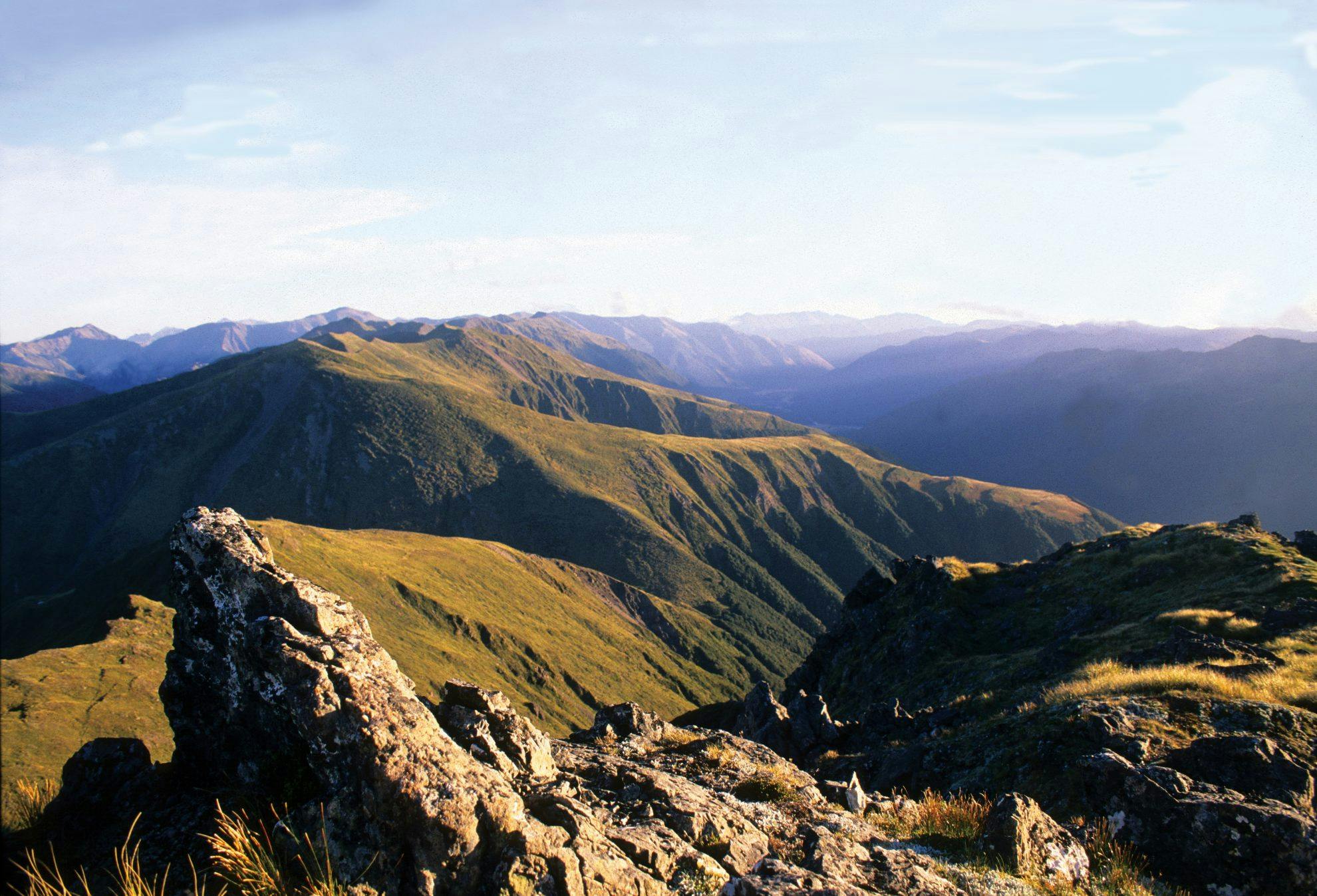- Time
- 3-4hr one way from the highway car park
- Grade
- Moderate
- Access
- Signposted opposite the Deer Valley car park on SH7 just south of the Lewis Pass Road summit
- Map
- BT23
Travers Peak, Lewis Pass
Just below the summit of the Lewis Pass Highway at Deer Valley, where the road begins to climb steeply through the remarkably beautiful red beech forests that cling to the valley sides here, a rough track disappears into the forest.
This otherwise well-marked trail climbs onto the terrace above the road and slowly turns to the east to gain the spur between Goings and Foleys creeks which ascends to the bush edge on Travers Peak (1724m) a major landmark in the Lewis Pass region.
I’m intent on reaching this summit, though the hour is late, 6pm, and I have only just worked up the enthusiasm to head out after a long, lazy day at a riverside camp with the family. Despite this lethargy the evening light now beginning to slant into the valley has energised me enough to give it a go and take my chances with a late return in the dark with my headlamp.
As I get underway, striding out in deep shadows through the bush canopy on the lower part of the spur, I encounter late afternoon sunlight flooding the upper parts of the ridge and of course the tops higher up. The striking tones of light encourage me to go all-out for the summit where I hope to be before sunset at 9.30pm.
Travers Peak is one of my favourite day climbs, just enough gradient to make you feel as though you’ve done a good day’s work, but not so much as to be an endless burden of ascent. It’s also close to the highway, barely three clicks to the top, has a superb view, and wonderful herb fields dotted with small tarns. I encounter the first of these as I leave the forest edge at 1300m and climb over several terraces to gain the main ridge. It’s markedly cooler up here, a pleasant change from the warmth of the forest, the temperature change allowing me to increase my pace and I cover the next kilometre of ridge crest in quick time leaving just the final climb up the summit pyramid.
I’ve always relished the freedom of the tops, where, with clement weather and an eye for terrain you may wander at will over the mountain crests absorbing the magnificence of the landscape while monitoring your progress, energy levels, and exposure to the elements – a vital part of keeping safe up here.
I can see the summit now, beyond a series of monolithic rocks which are absorbing the warm tones of the approaching sunset. There’s a kea calling far off, but no sign of the bird from where I stand observing the mighty ranks of the Spenser Range to the north-east. Below the summit a spider web of deeply entrenched streams drain the flanks of the range like creases on a weathered face, now rimmed with shadows from the setting sun. A quiet breeze ruffles the tussock, night is slowly flooding the valleys, while around me the peaks still shine with the last light of day.
It’s a scene of unparalleled tranquillity and I am reluctant to leave my mountain castle, yet I must hasten on down to the bush edge before night arrives and the way becomes less clear.






